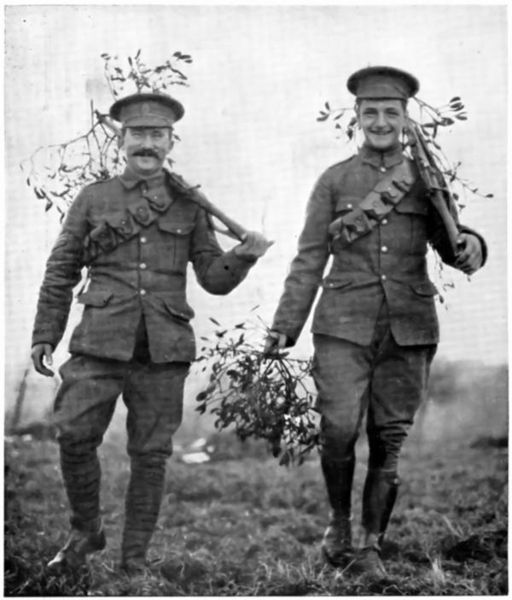Making Christmas More Fun!
Way Back Then...
Mistletoe has been a part of human culture for thousands of years, and is still present in today's culture as a popular Christmas decoration. But how has this little plant had such a big impact on society? This page will discuss the history of the Mistletoe (Not just specifically Phoradendron leucarpum) and the impact that it has had on the world.
From Greek Traditions...
In ancient Greece,
Mistletoe was thought to have mystical
properties, bringing fertility to anyone
who wore it around their body.
This is thought to be due to the fact
that no one knew how it got from one
tree to another, and that it must be
magically fertile. One theory
 about how the "kissing under the
Mistletoe" tradition came to be also
originates in Greek culture, as
Mistletoe was used in many marriage
rites.
about how the "kissing under the
Mistletoe" tradition came to be also
originates in Greek culture, as
Mistletoe was used in many marriage
rites.
From Druid Culture...
Later in history, the Mistletoe became a huge part of Druid, Scandinavian, and Early European culture.
- Druid priests believed that the Mistletoe had healing properties, and that it would protect people from evil spirits.
- Scandinavian people believed that if two warriors met under a mistletoe, they could declare a truce or fighting must wait until the nest day. This "plant of peace" also dictated that a fighting couple must kiss and make up.
The Mistletoe Legend...
According to European legend: if the god of the summer sun, Balder, was killed, then all life on earth would end. Balder's mother, Fridda (goddess of love), did not want this to happen; so she sought a promise from all the elements, animals, and plants of the world that they would never harm her son. She forgot one plant however, and this was the plant which the god of evil (Loki) used to kill Balder; Mistletoe. After three days however, Fridda was finally able to revive her son, and the world was able to live. The legend tells us that Fridda's tears for her son became the white berries of the Mistletoe, and that when Balder was brought back to life, she was so happy that she kissed everyone who passed underneath the plant.
Around the time of the Industrial Revolution, Mistletoe was hung in houses around Christmas.
- If a girl was asked for a kiss under a Mistletoe, she could not refuse.
- If a person did not receive a kiss under the mistletoe, they were sure not to be married in the next year.
- On the last night of Christmas, the Mistletoe would be burned, so that one day all those who kissed under it may find marriage.
To see the Habitat and Geography of
the Mistletoe, click here!
Copyright © 2007, Design by: Sunlight webdesign
